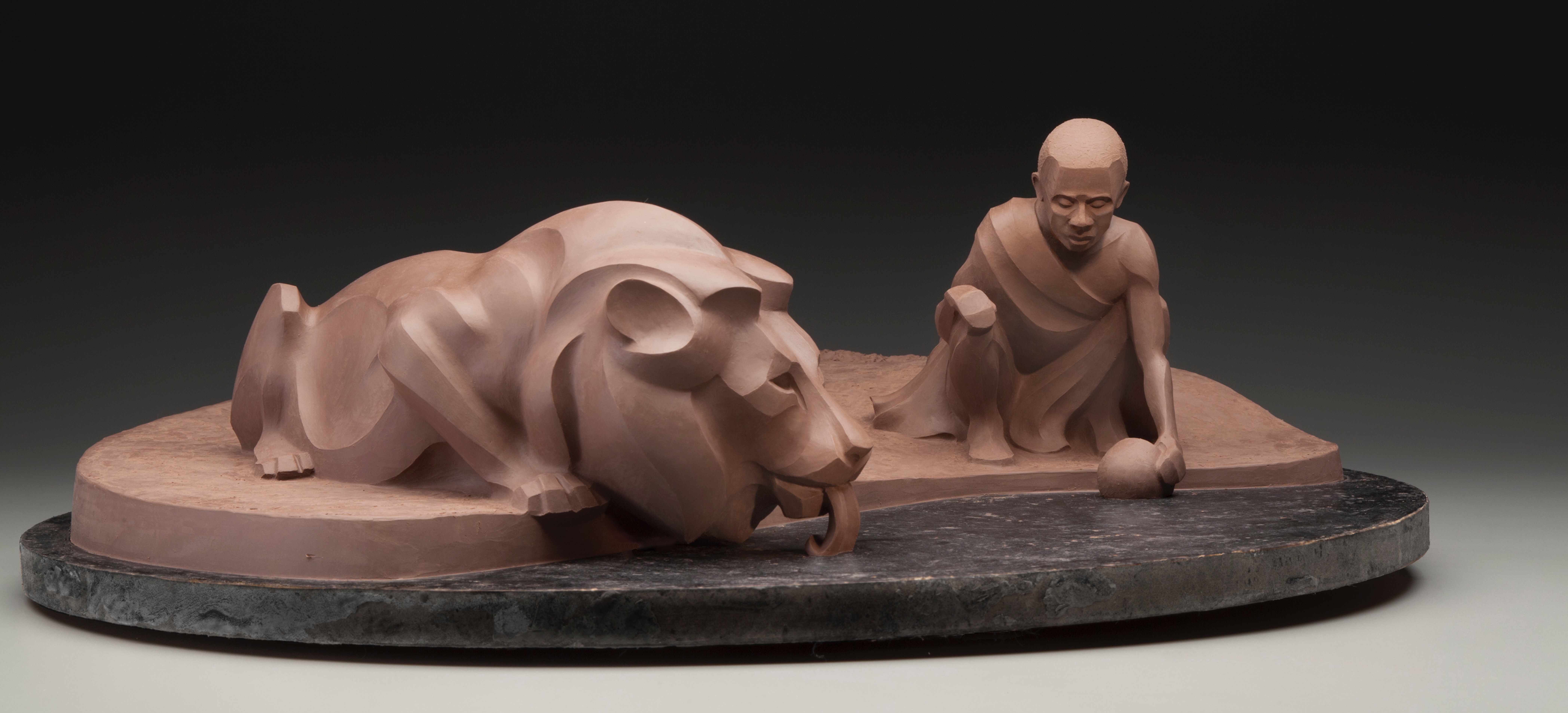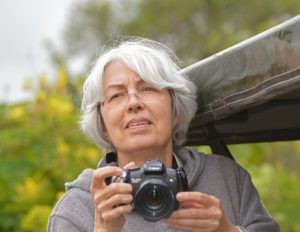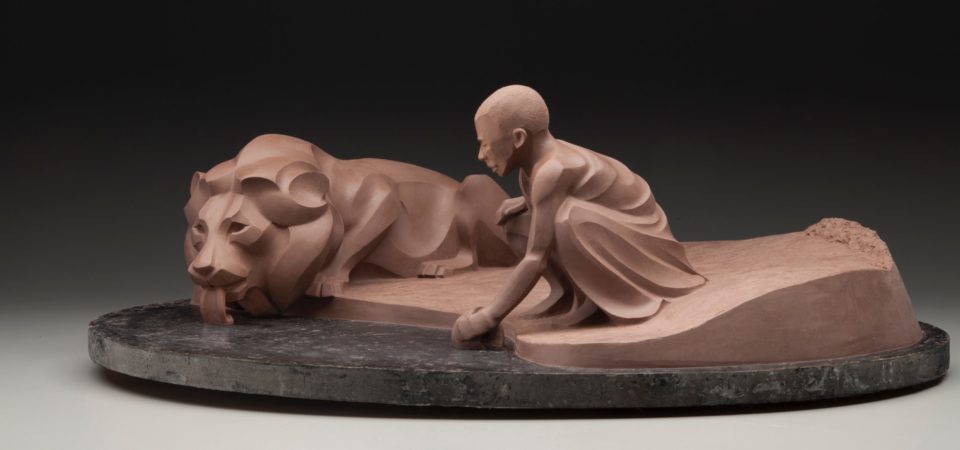As is the case with most wildlife artists I know, I have always hoped that my sculptures would inspire people to appreciate the creatures that I depict to the extent that they might at least respect and admire them, and at best become involved in protecting them and their ecosystems from destruction. I have emphasized the strength, spirit and nobility of the animals I sculpt, presenting them as I see them, as not only magnificent beings in their own right but also as indispensable components in the balance of nature that we all rely on for sustenance.
I seem to have achieved that desired result to some extent as viewers of my work often comment that I have captured so many of the admirable qualities of the animals I depict. But this doesn’t go far enough. I want people to rethink not only their attitudes toward the individual animals but also toward where these creatures fit into the continuum of existence within the ecosystem in which we all dwell and what our relationship with them should be.
It pains me greatly to see how the majority of mankind today seems to view the treasures of the Earth’s wild flora and fauna as either nuisances to be eliminated or commodities to be exploited for financial gain, with total disregard for either the intrinsic value of individual living things or the essential role that they play in the natural balance needed to sustain all life, including human, on our incredible planet. On a more personal level, I am devastated to witness the physical and emotional suffering man inflicts on sentient creatures who know no hatred or greed as they simply try to live their lives as they were intended to.

I was moved by tales told by African natives of their ancestors who lived off the land and shared the scarce resources such as water with the wild predators. As long as all were allowed to live in peace there was no animosity among them. The predators had prey they much preferred to humans, and the humans had no concept of killing the predators for fun or profit. My sculpture, Ancient Truce (though more of an allegory than reality as these two would most likely not have shared the waterhole at the same time) elicits this feeling of guarded but respectful coexistence that worked so well in a simpler and more sincere time of sustainable living on this planet.
In the face of recent disheartening news of the senseless march toward the extermination of so much of our natural treasure, I am heartened by the efforts of many organizations and individuals to help the humans most greatly impacted by the existence of wild animal populations understand and find ways of protecting and nurturing these ecosystems in ways that sustain their human communities as well. Hopefully some of the balance lost in man’s one-sided war against nature can be regained to the benefit of all.
I do try to support the efforts of many organizations by donating my sculptures for fundraising whenever I can. This allows me to contribute more than I would be able to by simply writing a check, though I do that often as well. The reach of these efforts, however, is limited to fundraising and does nothing to change attitudes since exposure of my work in these arenas is basically preaching to the choir. So I try to expose my sculptures to the public as often as I can through juried exhibitions, advertising, galleries, and in magazine editorial coverage which I have been fortunate to receive throughout my career because of my unique approach to the depiction of the animal form.
My sculpture style has been described as hard-edged yet soft, sensitive yet powerful. These are the qualities of the animals that I want to project. My challenge now is to extend the impact of my work to include a thoughtful assessment of the human connection to these creatures and to the entire ecosystem that is this amazing Earth. Perhaps I can persuade a few souls that we don’t have to destroy our natural treasures in order to benefit from them in an equitable and sustainable way. If we are to do this with respect for the value of every living inhabitant of the planet it will take passionate effort by the enlightened and a deep change of attitude for many.
Art has, from the beginning of man’s tenure on Earth, been a powerful force for changing attitudes and nurturing passions. I’m honored and excited to be a part of that noble endeavor.
 Though drawn to modeling animals in clay at a very young age, Rosetta’s formal art training was in commercial art, culminating at the Art Center College of Design in Los Angeles and a successful 20-year career in graphic design. Eventually however, the urge to pursue her love of creating in three dimensions and her passion for animals resurfaced and she has been sculpting wildlife full-time since 1992. Nurtured by inspiring photo safaris in Africa and observing our own natural treasures in our National Parks, her sculptures capture the animals’ form, but it is their life force in all of its visual splendor, rather than their realistic physical form, that inspires her stylized interpretations.
Though drawn to modeling animals in clay at a very young age, Rosetta’s formal art training was in commercial art, culminating at the Art Center College of Design in Los Angeles and a successful 20-year career in graphic design. Eventually however, the urge to pursue her love of creating in three dimensions and her passion for animals resurfaced and she has been sculpting wildlife full-time since 1992. Nurtured by inspiring photo safaris in Africa and observing our own natural treasures in our National Parks, her sculptures capture the animals’ form, but it is their life force in all of its visual splendor, rather than their realistic physical form, that inspires her stylized interpretations.
Rosetta’s work ranges from miniature to monumental and has been exhibited nationally and internationally in museums and galleries, and in numerous juried and invitational exhibitions. A Fellow of the National Sculpture Society and member of the Society of Animal Artists, Artists for Conservation, American Women Artists and Northwest Rendezvous Group, Rosetta has won awards from these organizations and many others, and her monumental sculptures have been purchased for museum, public art and corporate and private collections.
This post is part of the MAHB’s Arts Community space –an open space for MAHB members to share, discuss, and connect with artwork processes and products pushing for change. Please visit the MAHB Arts Community to share and reflect on how art can promote critical changes in behavior and systems. Contact Erika with any questions or suggestions you have regarding the new space.
MAHB Blog: https://mahb.stanford.edu/creative-expressions/ancient-truce/
The views and opinions expressed through the MAHB Website are those of the contributing authors and do not necessarily reflect an official position of the MAHB. The MAHB aims to share a range of perspectives and welcomes the discussions that they prompt.
